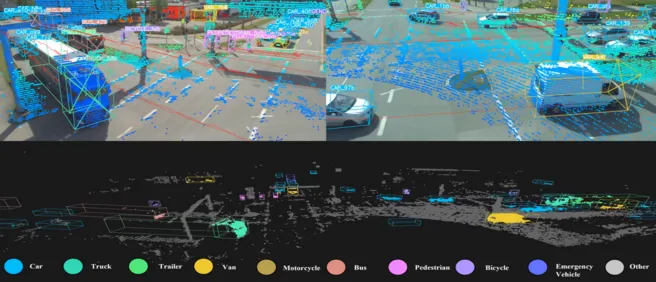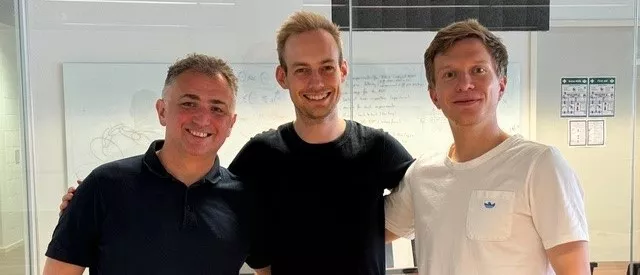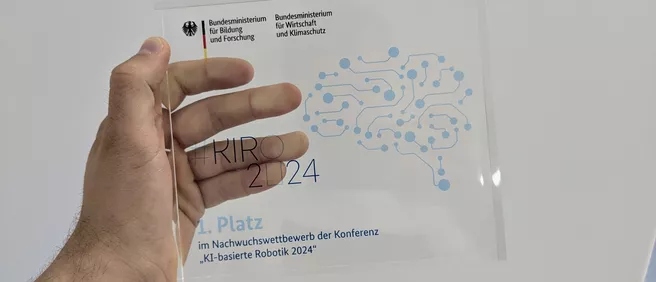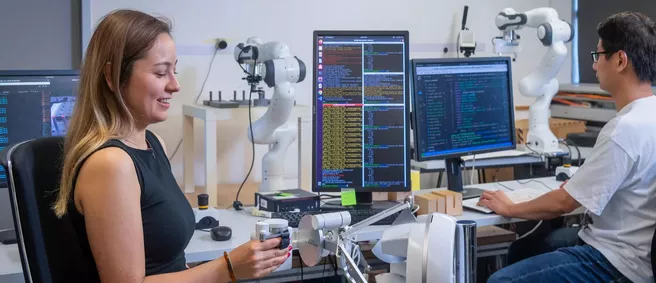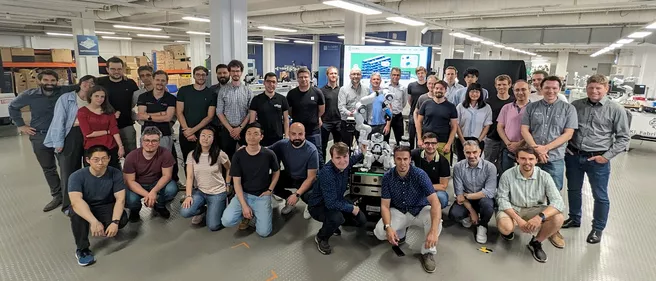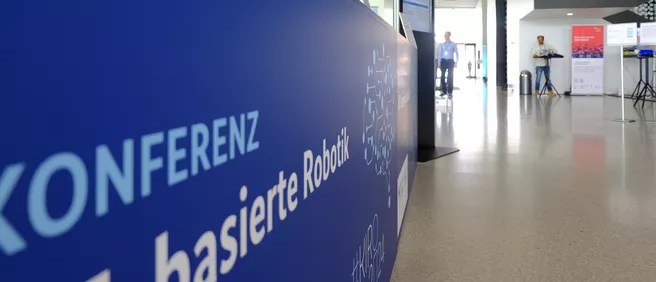NEWS,
Innovation,
Mobilität
|
NEWS,
Research,
Robotics
|
Improve learning efficiency with the help of action mapping
NEWS,
Community,
Innovation,
TUM Press Release
|
TUM Presidential Entrepreneurship Award: Finalists and winners
NEWS,
Innovation,
Health,
Research,
Robotics
|
Geriatronics Summit 2024: "Technology Should Improve Care Quality"
NEWS,
Community,
Research,
Robotics,
Artificial Intelligence
|
KIRO2024: TUM Researcher awarded Young Scientist Prize by BMBF
NEWS,
Community,
Innovation
|
Call for Team Applications: Manipulation Skill Versatility Challenge (MSVC)
NEWS,
Innovation,
Research,
Perception
|
Transmitting the sense of touch via the Internet
NEWS,
Research,
Robotics,
Artificial Intelligence
|
KI.Fabrik met DARKO scientists
NEWS,
Research,
Robotics,
Artificial Intelligence,
TUM Press Release
|
